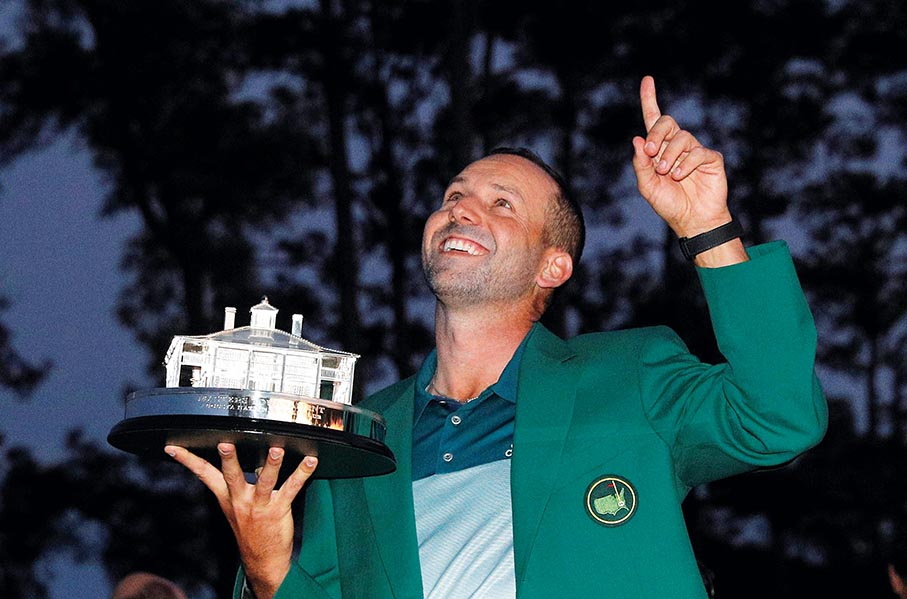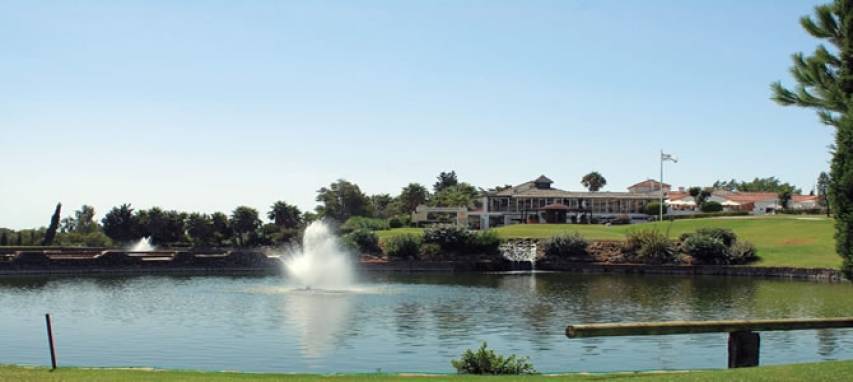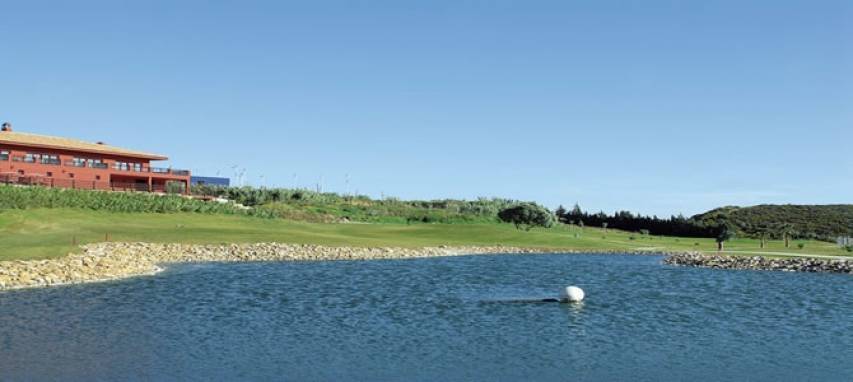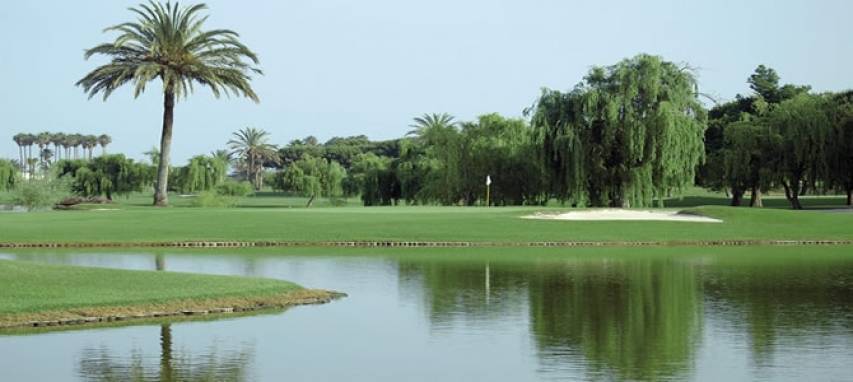“When I came here in 1999 as an amateur, I felt like this course was probably going to give me at least one major,” he said before receiving the 2017 green jacket from the previous year’s winner Willett. “I’m not going to lie, that thought kind of changed a little bit through the years, because I started feeling uncomfortable on the course. But I kind of came to peace with it the last three or four years, and I accepted what Augusta gives and takes. And I think, because of that, I’m able to stand here today… Been a long time coming. It’s been an amazing week, and I’m going to enjoy it for the rest of my life.”
On the Wednesday that week, Olazábal had sent García a message telling him how much he believed in his compatriot. “And what I needed to do. And just pretty much believe in myself.” He also mentioned he was not sharing his champion’s locker at Augusta National with anybody. “I hope that I get to do it with you,” Olazábal told García.
The other Spanish winner at Augusta, Seve Ballesteros, who died in 2011 of brain cancer, would have turned 60 on the Sunday of the 2017 Masters. García said he felt the presence of the two-time Masters winner (1980 and 1983) several times during the week. Clearly it had a calming influence, because García said he never felt so calm on a major Sunday.
“To do it on Seve’s 60th birthday and to join him and Olazábal, my two idols in golf my whole life, it’s something amazing.”
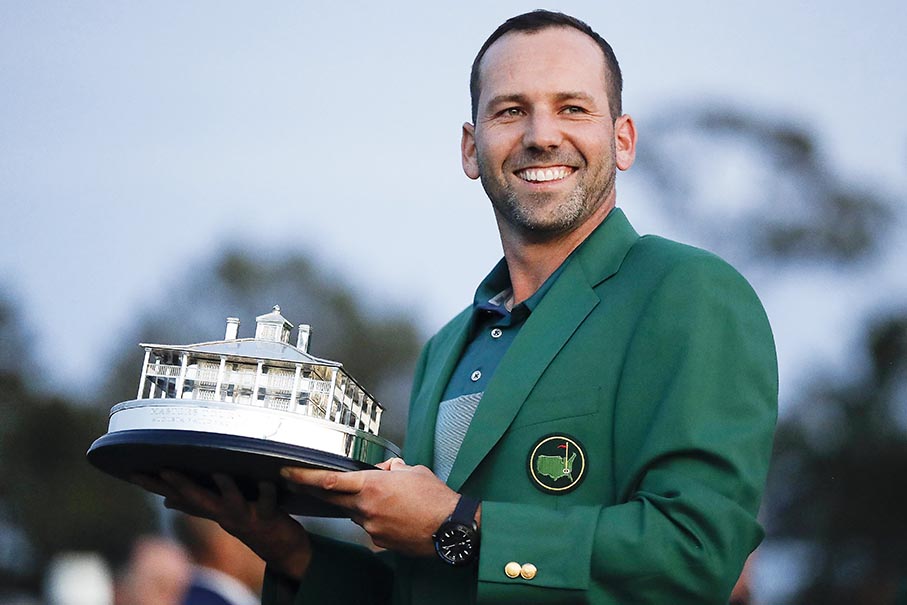
No one had ever played more majors as a pro (70) before winning one for the first time – and finally banishing their demons. Both he and Justin Rose – his playing partner in the last group – had closed with three-under 69s after a topsy-turvy back nine to finish level and set up a nerve-wracking play-off.
On the first hole of sudden-death Rose sent his drive into the trees on the 18th hole, punched out and failed to save par from five metres. That meant García had two putts from four metres for the victory, and his first putt swirled into the cup for a birdie. He crouched in disbelief, both fists clenched and shaking, and shouted the loudest roar of the day.
Rose, winner of the 2013 US Open and 2016 Olympic golf tournament, graciously patted García’s cheek before they embraced. Rose then tapped García on the heart. “Ser-gee-oh! Ser-gee-oh!” the gallery chanted to García. He turned with his arms to his side, blew a kiss to the crowd and then crouched again and slammed his fist into the turf of the green.
“If there’s anyone to lose to, it’s Sergio. He deserves it,” said Rose. “He’s had his fair share of heartbreak… Often he feels like he’s not supported the way he would like to be here in America. It was encouraging to see the crowd get behind him. I think they realised he paid his dues.”
In July that same year, the then 37-year-old García went on to marry his Texas-based fiancée, Angela Akins, who during Masters week had left notes of inspiration and love on the mirror at their rental place.
“I have a beautiful life,” García said. “Major or no major, I’ve said it many, many times. I have an amazing life.”
World Ranking Over the Years
It is highly unlikely that Sergio will ever be able to equal the second place in the world ranking that he attained in 2008 and held for 18 weeks. Thanks to his victory in the US 2017 Masters, the Castellón-born star rose to fifth in the ranking, but from then on he has gradually lost positions (he began 2022 in 45th place).
If we do the maths since the first time he entered the top-10, on 16 January 2000, it turns out that the Spaniard has spent 353 weeks in the world’s highest echelon.
These are the most significant dates for Sergio in the world ranking during his long and fruitful career:
– 11 July 1999: he entered the top-100 of the ranking for the first time… and he hasn't left it.
– 15 August 1999: he entered the top-50 of the world ranking for the first time… and since then he has only been outside that position for 50 weeks.
– 16 January 2000: he entered the top-10 of the world ranking for the first time.
– 24 June 2001: he made it into the top-5 of the ranking for the first time, and remained in that position for 118 weeks.
– 9 August 2008: he rose to second for the first time, his best career ranking, holding the position for 18 weeks.
García once reached 111 consecutive weeks (his best streak) in the world top-10.



